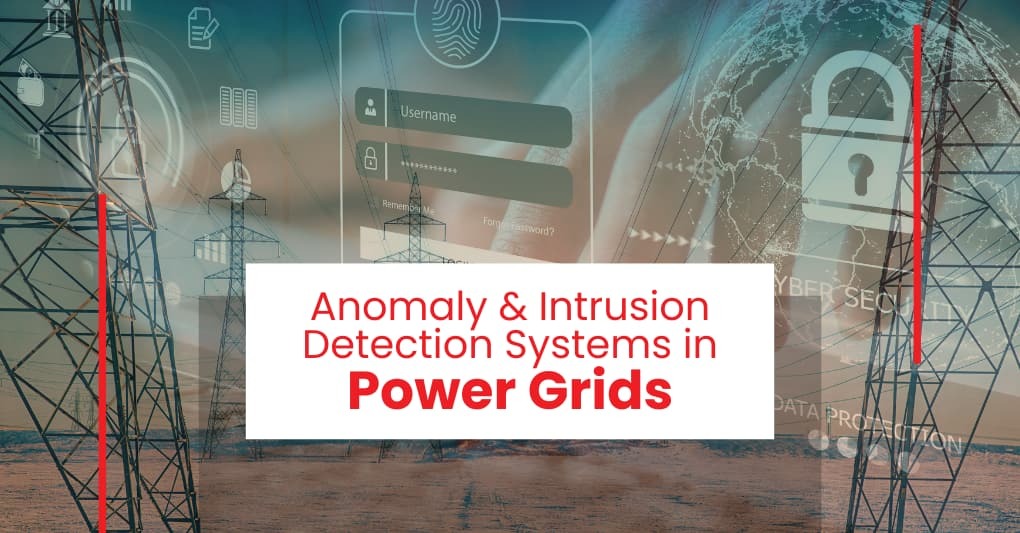With the widespread integration of Operational Technology (OT) in vital infrastructure sectors such as energy, manufacturing, mining, and transportation, industrial operations such as power grids are now facing escalating threats from cyber attacks. According to the FBI Internet Crime Complaint Center (IC3), the year of 2021 saw more than 800,000 complaints and reported almost $7 billion worth of losses. These numbers, although already alarmingly high, only account for reported cases. The real numbers could be significantly higher. These incidents pose risks ranging from operational disruptions to equipment damage and potential harm to workers.
As a result, safeguarding OT systems is emerging as a paramount concern for power grids. A pivotal approach in enhancing cybersecurity for power grids involves the implementation of intrusion detection and anomaly detection technologies. These tools furnish real-time insights into network and device activities, empowering
An Introduction to Intrusion Detection Systems
An intrusion detection system (IDS) is an integral component of cybersecurity best practices, serving as an additional layer of defense for power substations. Functioning like an intruder alarm, an IDS plays a crucial role in identifying and notifying users of any malicious activity or breaches that may jeopardize a power grid’s data or network integrity. It is implemented as either a software application or a hardware device, tasked with monitoring both incoming and outgoing network traffic.
Utilizing advanced techniques, IDS can scrutinize network packets and traffic patterns, seeking out anomalies or suspicious behaviors that might indicate a potential compromise. By diligently monitoring network and system activities, an IDS can detect and promptly alert security administrators to unauthorized or malicious activities, ranging from unauthorized access attempts to malware infections and unusual network traffic patterns. While generally passive, some intrusion detection systems can take responsive actions when detecting malicious behavior.
Operation of an Intrusion Detection System
It’s crucial to understand that Intrusion Detection Systems generally operate within the framework of a comprehensive system and don’t function as a standalone solution. The efficacy of an IDS is optimized when deployed in conjunction with complementary security measures such as firewalls, antivirus software, and adherence to security policies. Moreover, the collaboration of Intrusion Prevention Systems (IPS) with IDS is commonplace, as IPS not only identifies threats but actively intervenes by blocking or preventing the detected malicious activities.
When integrated, their primary function is to proactively identify unusual behavior and potential intrusion at an early stage, empowering organizations to respond promptly and fortify their network security. Upon detecting an intrusion or suspicious activity, it initiates the generation of alerts or notifications targeted at security administrators. These alerts furnish crucial information pertaining to the incident’s nature, the impacted system or network, and supplementary details essential for an effective response and mitigation process.
It is important to highlight that while the majority (though not all) of IDSs are inherently passive, i.e. they don’t actively prevent malicious activities, they serve as invaluable sources of information for safeguarding systems. And while all intrusion detection systems share the overarching goal of enhancing security, they may employ slightly different mechanisms.
Explore G-DetectTypes of Intrusion Detection Systems
There are five distinct types of IDS, each with its unique attributes.
1. Network-based Intrusion Detection Systems (NIDS)
NIDS focus on monitoring network traffic in real-time. Placing sensors strategically across the network, NIDS analyzes packets to identify suspicious or malicious activity. It operates at the network layer, making it adept at detecting threats such as port scanning, denial-of-service (DoS) attacks, and network intrusions. NIDS can be deployed as a standalone device or integrated into a broader network security infrastructure.
2. Host-based Intrusion Detection Systems (HIDS)
In contrast to NIDS, HIDS focuses specifically on individual hosts or endpoints, including servers and workstations. It analyzes system logs, file integrity, and user activities to pinpoint unauthorized access attempts, privilege escalations, or suspicious behavior at the host level. HIDS is particularly effective against insider threats and malware infections that might bypass your power grid’s network-based defenses.
3. Signature-based Intrusion Detection Systems (SIDS)
SIDS focus on identifying patterns matching known signs of intrusions. Operating with a database of previous intrusions, SIDS notify administrators if network activity aligns with a recognized attack signature. Regular database updates are crucial for SIDS, as they can only identify attacks they recognize. While effective against known threats, SIDS may struggle with novel intrusion techniques.
4. Anomaly-based Intrusion Detection Systems (AIDS)
This type of system leverages machine learning and statistical data to create a model (baseline) of normal network behavior. When network traffic deviates from this baseline, the system flags it as suspicious. AIDS excels at identifying new zero-day intrusions but is prone to false positives, reporting any anomalies as potential intrusions due to the absence of a known attack database.
5. Hybrid Detection Systems
Hybrid Intrusion Detection combines the strengths of both signature-based and anomaly-based approaches. By examining patterns and one-off events, a hybrid system can flag both new and existing intrusion strategies. While providing comprehensive coverage, the hybrid system may result in a higher number of flagged issues. However, as the primary purpose of an IDS is to identify potential intrusions, the increased alerts contribute to a more robust security posture.
While signature-based detection is effective against known threats, anomaly-based detection excels in uncovering novel intrusions. A hybrid system offers a balanced approach, providing broad coverage but requiring careful consideration of flagged issues. Overall, selecting the appropriate IDS method depends on the needs and the threat landscape of your power grid.
Introducing G-Detect: GRIDsentry’s AI-powered Intrusion Detection Solution
G-Detect revolutionizes cybersecurity within digital substations by conducting deep packet inspection in real-time and offline modes, offering both online intrusion detection and forensic analysis capabilities.
What sets G-Detect apart is its anomaly detection capabilities, driven by data-driven, statistical-driven, and model-driven AI/ML algorithms. The system boasts a user-friendly interface with an alarm system, providing a seamless experience for monitoring and responding to potential threats. G-Detect doesn’t just passively monitor. It actively engages in both active and passive network scanning, enhancing its proactive security measures.
G-Detect stands out with a range of offerings, including robust Data Processing & Anomaly Detection, Confidential Report Generation, and an Intrusion Historian feature. These components work in harmony to ensure a holistic and effective intrusion detection system for your power grid.
To know more about G-Detect’s robust AI-powered intrusion detection solutions, schedule a demo with us.


